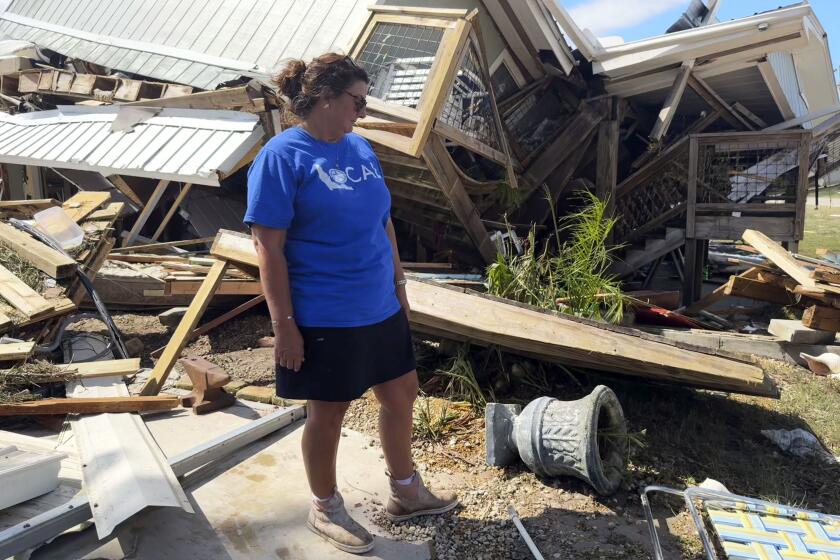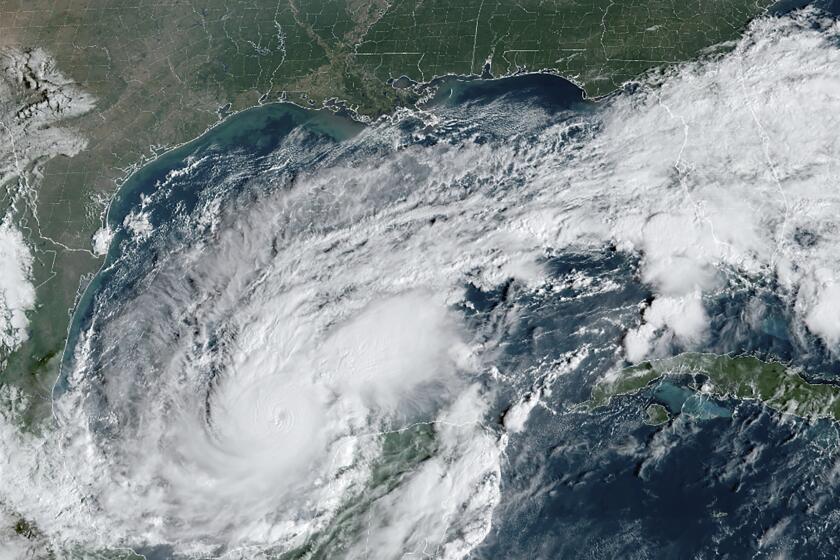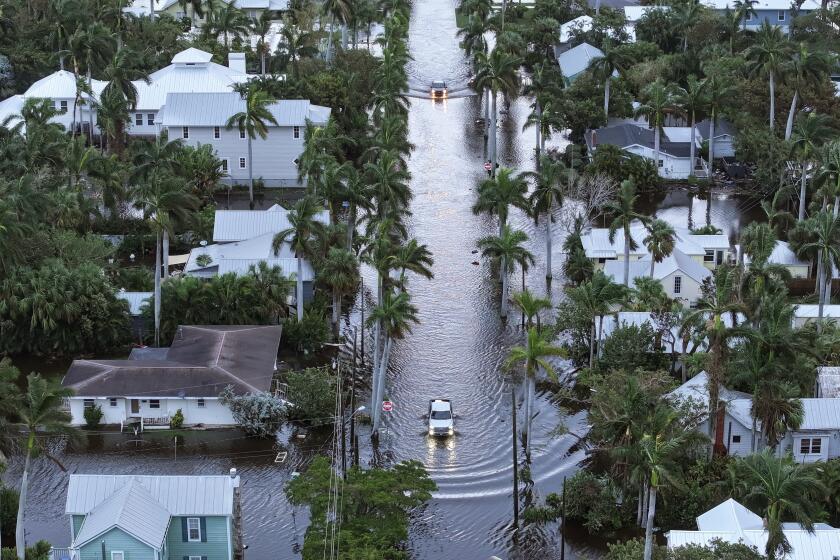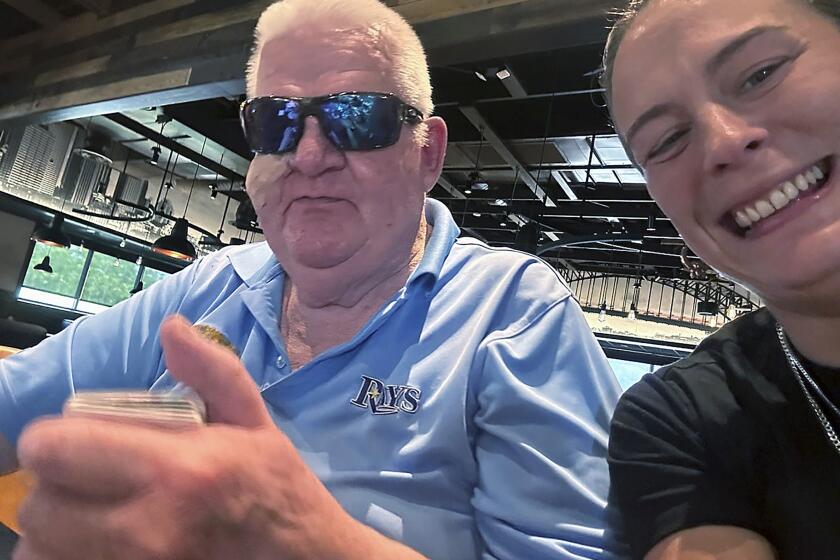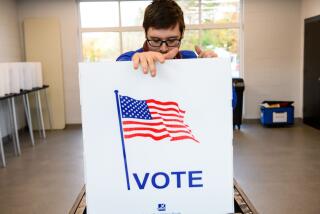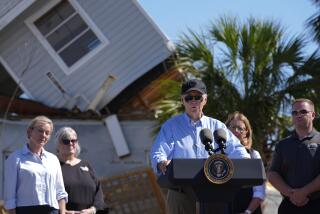Determination to rebuild follows Florida’s hurricanes with acceptance that storms will come again

VENICE, Fla. — No sooner had residents of the Bahia Vista Gulf condominium complex dug out and from Hurricane Helene than they were faced with the same daunting cleanup from new damage inflicted by Hurricane Milton.
The beachfront units had been gutted, treated and dried out after Hurricane Helene and mounds of sand that had blown in from the beach had been removed. Then, less than two weeks later, Hurricane Milton barreled in and undid all the progress.
“They’ve got to start the whole process over, cleaning, sanitizing, bringing in drying equipment, getting them all dried and prepped for renovations,” said Bill O’Connell, a board member at the complex in Venice, about an hour’s drive south of Tampa. The second hurricane “brought all the sand back on our property.”
Some longtime Floridians have grown accustomed to the annual cycle of storms that can shatter and upend lives in a state known mostly for its balmy weather, sunshine and beaches.
For the third time in 13 months, the town of Horseshoe Beach, part of Florida’s Big Bend along the Gulf of Mexico, took a direct hit from a hurricane.
“It’s the price you pay to live in paradise,” O’Connell said. “If you want to live here with this view, beautiful sunsets, be able to go out on your boat, enjoy what Florida has to offer, you have to be willing to accept that these storms are going to come.”
A swath of the state still was coming to terms with damage from the unusual dual strike of storms in such close proximity. Many residents, some returning home after evacuating, spent much of Saturday searching for gas as a fuel shortage gripped the state.
President Biden arrived Sunday at MacDill Air Force Base in Tampa to survey the devastation inflicted on Florida’s Gulf Coast. He planned to do an aerial tour of the damage from Tampa to St. Petersburg.
Hurricane Milton killed at least 10 people after it made landfall as a Category 3 storm, tearing across central Florida, flooding barrier islands and spawning deadly tornadoes. Officials say the toll could have been worse if not for the widespread evacuations. Overall, more than a thousand people were rescued.
Hurricane Milton, a Category 4 hurricane, threatens disastrous winds and storm surge to the Tampa Bay area and the west coast of Florida, officials said Monday.
Disaster hits twice
In the fishing village of Cortez, a community of 4,100 southwest of Tampa, Catherine Praught said she and her husband, Mark, felt “pure panic” when Milton menaced Cortez so soon after Helene, forcing them to pause their cleanup and evacuate. Fortunately, their home wasn’t damaged by the second storm.
“This is where we live,” Catherine Praught said of their low-lying home of 36 years that had to be emptied, gutted and scrubbed after Helene. “We’re just hopeful we get the insurance company to help us.”
Residents of the community’s modest, single-story wood and stucco-fronted cottages worked Saturday to remove broken furniture and tree limbs, stacking debris in the street much like they did after Helene.
A similar scene could be found in Steinhatchee, west of Gainseville, where enormous piles of debris lined the streets.
Melissa Harden lives less than a block from a restaurant and neighborhood bar that were reduced to rubble. Her house is on 16-foot pilings, but 4 feet of water flooded in. When Milton was forecast, she feared Steinhatchee would be hit by the third hurricane in 14 months.
Search and rescue teams fan across Florida after Hurricane Milton strikes with storm surges up to 10 feet and 120-mph winds and pummels communities with deadly tornadoes.
“Personally, I thought, if it comes, we’re already evacuated and our home is pretty messed up,” she said as friends and relatives helped with the cleanup, removing bathroom fixtures and pulling out damaged boards. “Of course we didn’t want it! No more storms!”
Moody’s Analytics on Saturday estimated economic costs from the storm will range from $50 billion to $85 billion, including upwards of $70 billion in property damage and an economic output loss of up to $15 billion.
Widespread fuel shortage
In St. Petersburg, people lined up at a station that had no gas, hoping it would arrive soon. Among them was Daniel Thornton and his 9-year-old daughter Magnolia.
“They told me they have gas coming, but they don’t know when it’s going to be here,” he said. “I have no choice. I have to sit here all day with her until I get gas.”
Gov. Ron DeSantis told reporters that the state opened three fuel distribution sites and planned to open several more. Residents can get 10 gallons each for free, he said.
“Obviously as power gets restored ... and the Port of Tampa is open, you’re going to see the fuel flowing. But in the meantime, we want to give people another option,” DeSantis said.
Hurricane Helene’s storm surge struck Florida fast and hard when it slammed into Gulf Coast communities near St. Petersburg, Fla.
Officials were replenishing gas stations with the state’s fuel stockpiles and provided generators to stations without power.
Rising rivers among the remaining safety threats
As the recovery continues, DeSantis has warned people to be cautious, citing ongoing safety threats including downed power lines and standing water. Less than 930,000 Floridians were still without power Sunday morning, according to Poweroutage.us.
National Weather Service meteorologist Paul Close said rivers will “keep rising” for the next several days and result in flooding, mostly around Tampa Bay and northward. Those areas were hit by the most rain, which comes on top of a wet summer that included several hurricanes.
“You can’t do much but wait,” Close said of the rivers cresting. “At least there is no rain in the forecast, no substantial rain.”
Bynum, Farrington and O’Neil write for the Associated Press. Farrington reported from St. Petersburg, Fla. AP journalists contributing from Florida included Chris O’Meara in Lithia, Curt Anderson in Tampa, Freida Frisaro in Fort Lauderdale, Terry Spencer outside of Fort Lauderdale and Stephany Matat in Fort Pierce. Rebecca Santana in Washington, D.C., contributed.
More to Read
Sign up for Essential California
The most important California stories and recommendations in your inbox every morning.
You may occasionally receive promotional content from the Los Angeles Times.
